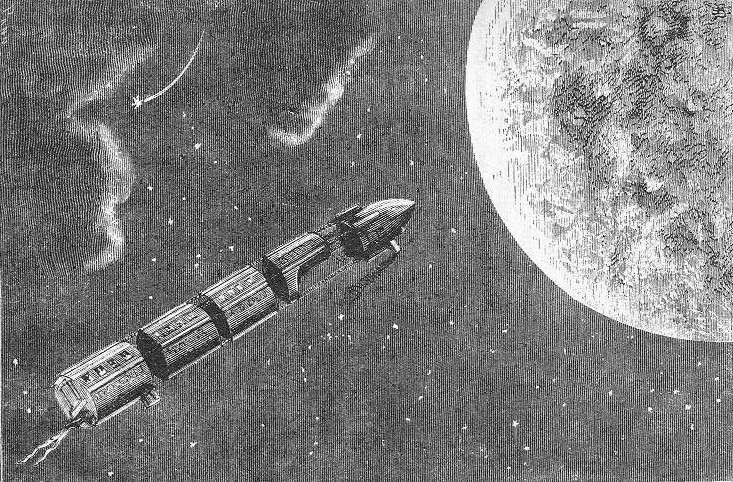
Rockets have been seen as the best way to get things into space ever since Robert Goddard, Hermann Oberth, Konstantin Tsiolkovsky, and Wernher von Braun‘s pioneering work in the first half of the 20th century. But they’re not the only option.
There are many alternatives that sidestep the high cost of rockets and their propensity to occasionally explode on the launchpad. Some have suggested structure–a tower that reaches 62 miles [100 kilometers] above sea level to the Kármán line, or even a space elevator. Others have proposed skyhooks or electromagnetic mass drivers.
These are all very complicated, and many are technically impossible with today’s materials. But there’s another, simpler option: Why don’t we just fire things into space from a huge cannon?
That’s the school of thought behind a long-hypothesized technology called space guns. Proponents claim that by loading a satellite or spacecraft into the barrel of a gun and aiming it upward, we could put objects into space for a fraction of the cost of a satellite.

Newton’s cannonball
Isaac Newton first envisaged the concept of the space gun in his 1728 book A Treatise of the System of the World. In it, he performs a thought experiment where a cannon is placed on the top of a very high mountain. Without gravity or air resistance, it would just follow a straight line away from Earth in the direction fired.
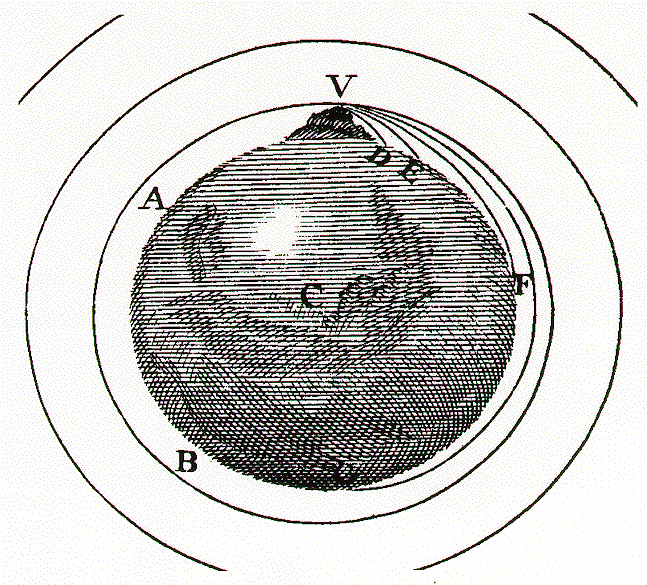
With gravity, however, its path depends on its initial velocity–it’ll either fall back to Earth, orbit the planet, or escape to space. All we need to do to achieve the latter of those scenarios is fire it with a high enough velocity. Newton wrote:
Imagine a mountain so high that its peak is above the atmosphere of the earth. Imagine on top of that mountain a cannon, that fires horizontally. As more and more charge is used with each shot, the speed of the cannonball will be greater, and the projectile will impact the ground farther and farther from the mountain.
Finally, at a certain speed, the cannonball will not hit the ground at all. It will fall toward the circular earth just as fast as the earth curves away from it. In the absence of drag from the atmosphere, it will continue forever in an orbit around the earth.

The Columbiad
A more well-known representation of a space gun in fiction is in Jules Verne’s From the Earth to the Moon. In the novel, astronauts fly to the Moon aboard a ship launched from a cannon on the surface of the Earth called the Columbiad.

Verne goes into great detail about the construction of this huge cannon, built from 136 million pounds [61.7 kilograms] of iron, smelted in 1,200 ovens, and shipped on 68 boats to its destination in Florida.
It’s then constructed into a gun with an 899-foot [274-meter] barrel, 6.5-foot [two-meter] thick walls, and a bore with a diameter of 10 feet [three meters].
In the novel, the cannon’s fictional creator, Impey Barbicane of the Baltimore Gun Club, announces to his membership:
“I have looked at the question in all its bearings, I have resolutely attacked it, and by incontrovertible calculations I find that a projectile endowed with an initial velocity of 12,000 yards per second, and aimed at the moon, must necessarily reach it. I have the honor, my brave colleagues, to propose a trial of this little experiment.”
The trial involves loading the gun with 396,832 pounds [180,000 kilograms] of gun cotton. That supposedly gives it enough oomph to fire its projectile–a hollow bullet designed with the capability to carry people into outer space.
In the end, the projectile is launched successfully, but the fate of the three astronauts inside is left inconclusive. The book’s sequel–Around the Moon–continues the story.
From the Earth to the Moon has inspired several movies, including Jules Verne’s Rocket to the Moon (a 1967 British sci-fi comedy, where the gun is mounted in the side of a Welsh mountain) and Le Voyage dans la Lune (a 1902 French silent film, which became the first work designated as a UNESCO World Heritage movie in 2002 and inspired an album by Air). You can see the latter in full right here:

Back in the real world
But that’s all fiction–how about reality? After the publication of Verne’s novel, there was much discussion of the space gun concept within scientific circles before reclusive Russian physicist Konstantin Tsiolkovsky–today considered one of the fathers of rocketry–trashed the idea in 1903.
Tsiolkovsky did some sums on the physics involved, and concluded that the firing gun would not only have to be impossibly long, but it would submit the astronauts inside to 22,000 Gs of acceleration. Maximum human tolerance of G-forces is about 20 to 35 Gs during the ten seconds that the firing of a space gun would take. In short–you could fire people to space, but they wouldn’t survive the trip.
That put space gun technology on the back burner for a while, until the German Empire revived it again during the First World War. Artillery engineers Max Dräger and Fritz Rausenberger used the same principles to build the Paris Gun–a huge, long-range siege gun capable of bombarding the French capital from its location 75 miles [more than 120 kilometers] away in the forest of Coucy.
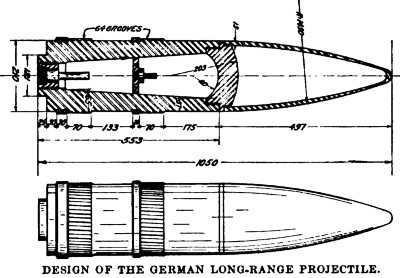
Its projectiles didn’t get as far as space, but they were the first human-made objects to reach the stratosphere, and required gunners to take into account the Coriolis force when calculating targets.
The Paris Gun, along with the plans for its construction, was completely destroyed at the end of WWI by retreating Germans, and its replacement was specifically banned under the Treaty of Versailles.
Before the war ended, however, the French had begun making plans to counter the Paris Gun with a long-range gun of their own, capable of firing multiple times behind the same projectile to increase acceleration. It didn’t even reach prototype stage before the end of the war, so the plans were archived. But that wasn’t the end of them.
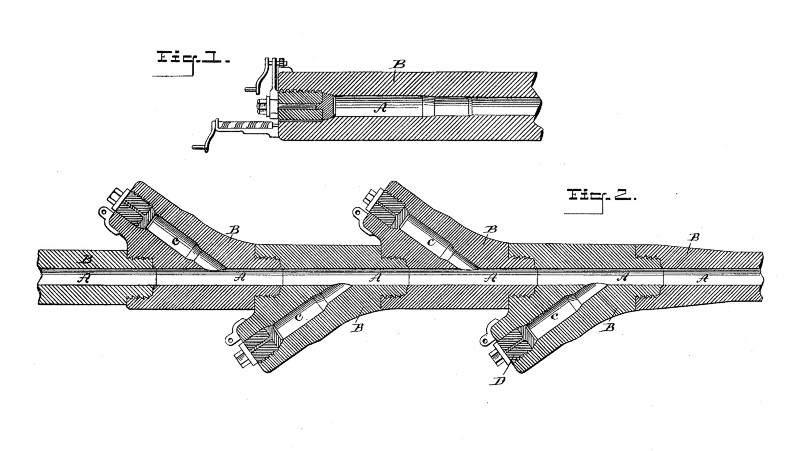
In 1940, as the forces of Nazi Germany rolled across France, the plans were rediscovered. In 1942, they arrived on the desk of August Cönders–a German engineer working in an artillery foundry. The Nazis had been grappling with the problem of long-range guns for some time, specifically how the huge explosive charges needed would rapidly degrade the barrels of conventional guns.
Cönders saw potential in the French plans, which would allow for a more gradual acceleration using multiple charges. He built a prototype, which showed promise, and was subsequently invited to present his work to Albert Speer–who greenlighted his plans for a gun capable of firing on London from the coast of Calais.

The V-3 cannon
This became the third of Hitler’s V-weapons, developed to deliver retribution for British bombing raids on Nazi Germany. They comprised the V-1 flying bomb, the V-2 rocket (which subsequently formed the basis of much of NASA’s early rocketry expertise), and the V-3 cannon.
The V-3 was code-named “high pressure pump” or “HDP”–an attempt to hide the real purpose of the project. The plan was to build 25 of them in the Fortress of Mimoyecques in the Pas-de-Calais region, with the first battery ready for March 1944 and the full complex finished by October. They were to be nearly 345 feet [105 meters] long, angled at 50 degrees, and pointed directly at London. An underground railroad and ammunition storage facility would serve the guns.
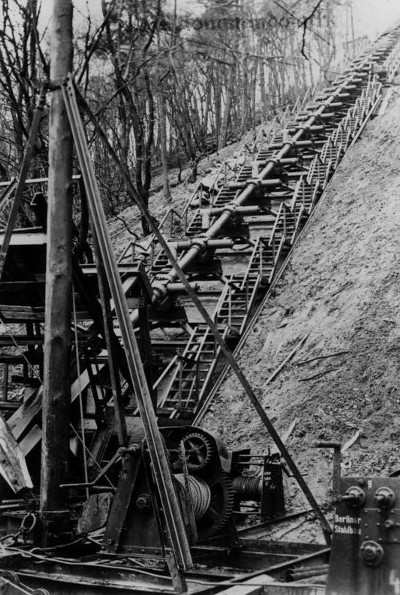
The Allies knew nothing about the German plans, but they did know about the V-2 rockets landing on London daily. They identified the fortress housing the under-construction V-3 gun as a possible launching base for V-2 missiles, and targeted it for intense bombardment.
It was put fully out of commission on July 6, 1944, by the Royal Air Force’s famous “Dambusters” No. 617 Squadron, which used “Tallboy” deep-penetration bombs to destroy it–entombing hundreds of workers in the tunnels below. At the end of the war, Churchill personally ordered that it be demolished, as it was still seen as a threat to the United Kingdom, despite the anger of the French who weren’t consulted on the decision. It later reopened–initially as a mushroom farm and then as a museum.
That left the V-3 unproven, and in late 1944 the project came under control of the SS. Two shorter guns, about 164 feet [50 meters] long, were constructed and set up in a ravine of the Ruwer River, southeast of Trier. They were aimed some 26 miles [43 kilometers] west at the city of Luxembourg, which had been liberated mere months beforehand.
Ammunition supply proved difficult due to the poor state of the German railway networks, but the SS had orders to begin firing by the end of December 1944. Supplies were delivered and the first tube fired five high-explosive shells on December 30, with the second tube joining it on January 11. However, the guns were not seen as particularly effective–142 rounds that landed in the city resulted in 10 dead and 35 wounded. Not very impressive for one of the Nazis’ supposed “wunderwaffen.” At the end of the war, the gun tubes were disassembled and shipped to the United States for testing, before they were scrapped in 1948.

A new beginning
The field of long-range artillery lay dormant for a while as the space race heated up and rocketry took center stage in the United States. But in Canada, a tempestuous engineer named Gerald Bull had other ideas about how best to get things into orbit.
Gerald was the second-youngest of the 10 children of George and LaBrosse Bull. Following the death of his mother in childbirth, and his father’s subsequent nervous breakdown, his older sister Bernice raised him. He started school early and loved building balsa wood aircraft of his own design. He graduated in 1946, and at just 16 years old managed to persuade the directors of the aeronautical engineering department at the University of Toronto to admit him to their brand new undergraduate program.
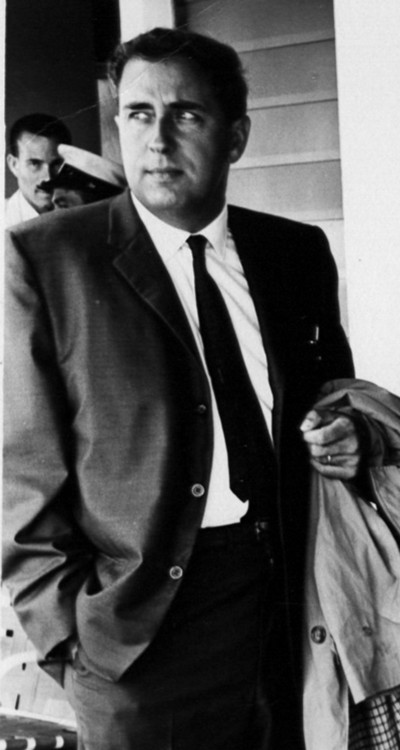
Despite achieving only average marks, he was then invited to join the university’s just-opened Institute of Aeronautics following a personal recommendation from its director, Gordon Patterson, who felt that Bull made up for his lack of academic credentials with his tremendous energy.
After successfully constructing a supersonic wind tunnel–at the time a rare device–he finished his Ph.D. thesis in 1950 and began working at the Canadian Armament and Research Development Establishment, or CARDE, which was researching supersonic flight and various rocket and missile projects at the time.
Bull developed a knack for bypassing budgetary restrictions by using scrap parts and shuffling money around between different projects, and became interested in finding ways to shoot missiles out of guns at extremely high velocities. This progressed to firing model aircraft out of guns, which attracted negative attention from his supervisors after he embarrassed the Prime Minister of Canada by leaking a story to the newspapers that the country was working on plans to put high-velocity guns in the noses of missiles.
Things came to a head on April 1, 1961–when Bull got into an argument with his direct superior over paperwork. He resigned, and a post-resignation report stated that ” “¦his tempestuous nature and strong dislike for administration and red tape constantly led him into trouble with senior management.”
Bull had seen this coming for some time, however, and had no problem getting another job as a professor at McGill University. He quickly set about turning the engineering department there into a leader in the field of aeronautics, as well as founding a private ballistics lab known as the Highwater Station on the U.S.-Canada border.
He remained close with some of his former colleagues, particularly Charles Murphy, who he’d worked with on the model aircraft project. They partnered with Arthur Trudeau–the director of U.S. Army Research and Development, who Bull had previously impressed during a visit to CARDE–on a project exploring the possibility of using guns to put missile components high into the Earth’s atmosphere for re-entry research.

Project HARP
The U.S. Navy supplied a spare 16-inch battleship gun it had lying around, and the Office of Naval Research paid for it to be rebored, meaning that the contract Bull, Murphy, and Trudeau signed totaled just $2,000. It was named Project HARP–short for “high altitude research program.”
But there was a problem. Bull’s Highwater station wasn’t big enough to support the enormous gun. The team needed an alternative launch site, and found one in a rather unconventional location–a meteorological station on the Caribbean island of Barbados. It was perfect for two reasons–its location near the equator meant less thrust would be necessary to achieve escape velocity, and it also allowed for a huge downrange area over the Atlantic for projectiles to land.
McGill University had run the station for some time, so Bull managed to get a meeting with the Barbadian Prime Minister, Errol Barrow. Barrow needed to be convinced that it was a good idea to allow another country to set up an enormous piece of artillery in his territory, with the supposed purpose of firing things into space.
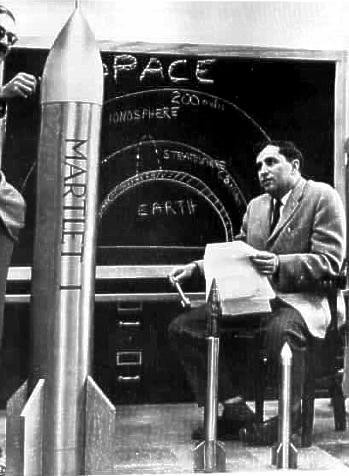
Barrow was easily won over. Bull had acquired a $200,000 advance to develop the gun range, and the impoverished nation–which, at the time, was still not fully independent of Britain–was eager to support projects with both potential and significant budget. As a result, Barrow became one of the most enthusiastic supporters and arranged for the gun to be set up in Foul Bay, on the southeast shore of the island.
The gun arrived by boat in the summer of 1962 but couldn’t be delivered directly to the site because of its rough coastline. Instead, it had to be unloaded farther down the coast; hundreds of locals were employed to transport the heavy components overland. A temporary railway track was laid–but with only 1,476 feet [450 meters] of rails available, so the track was pulled up as the gun passed over it and re-laid in front.
Eventually, by the end of the summer, the gun was in place and its support buildings constructed. Just as preparations were underway for the first test shot, however, the Cuban Missile Crisis erupted on the far side of the Caribbean. It couldn’t have come at a worse time–despite Project HARP’s peaceful objectives, the installation of a massive gun on a nearby island wouldn’t have gone unnoticed by the Soviets. Fortunately, the confrontation ended peacefully.

Test firing
On January 20, 1963, under a clear blue sky, the first shot was fired. A 694-pound [315-kilogram] wooden slug was propelled over 1.8 miles [3,000 meters] into the air, flying for 58 seconds before landing about a half mile [one kilometer] off-shore. It was a complete success, so two further scheduled test firings were abandoned, and preparations were made to fire real projectiles.

The next day, a Martlet-1 was launched. The Martlet was a dart-like, finned projectile named after the mythical bird on the McGill University crest. It flew far higher–to an altitude of 16 miles [26 kilometers] with a flight time of 145 seconds.
Two days later, a second Martlet-1 reached 16.8 miles [27 kilometers] with a radio transmitter beacon attached. This allowed the team to track the projectile throughout the course of its flight.
But the first tests revealed a few problems–the decades-old gunpowder being used to fire the gun was of poor quality, and the projectile was leaving the barrel so quickly that the gunpowder didn’t have time to completely burn. The powder was replaced, and by the end of June a world-record altitude had been reached of just over 57 miles [92 kilometers] for a gun-launched projectile.
It wasn’t just for fun. The Martlet was equipped with electronics that released chemical markers at set altitudes, leaving a smoke trail through the sky that could be used to measure upper-level winds. Some used additional electronics to measure magnetic fields. Bull later wrote:
The idea was to find out what happens in the atmosphere from sunset to sunrise. Remember, nobody gave us grants. We had to produce tropical atmospheric meteorological [data] for the army research office, that’s how we got our money. We were trying to measure everything to the top of the atmosphere, which we labeled as a nominal two hundred kilometers.
Funding was increased, but this high-atmosphere work was only an appetizer for Bull’s real interests. He wanted to fire a projectile into space. After extending the gun, allowing the powder to be contained for a longer period of time and slowing the acceleration, the team managed it. On November 18, 1966, a Martlet-2 was launched just short of 112 miles [180 kilometers] high–a world record for a gun-launched projectile that remains to this day.
The speed of the projectile was less than half of that necessary to reach low Earth orbit, so Bull wanted to continue. He designed a more complex Martlet-3 and Martlet-4, which were miniature rockets with their own thrusters. But political opposition to the project was mounting–the U.S. Army lost its battle to control space operations and was forbidden to conduct launches above 62 miles [100 kilometers], meaning that all funding for Bull’s orbital program had to come from the Canadian government.
That budget was shrinking due to changing public attitudes toward military affairs, and negative reviews from the press and other researchers. A change of government sealed the deal–Canada didn’t renew its funding in 1967, despite a last-ditch attempt to stir some nationalism with a plan to launch a Canadian flag into orbit.
With the cancellation of Canadian sponsorship, and the U.S. Army’s inability to launch to orbit, Project HARP was over.
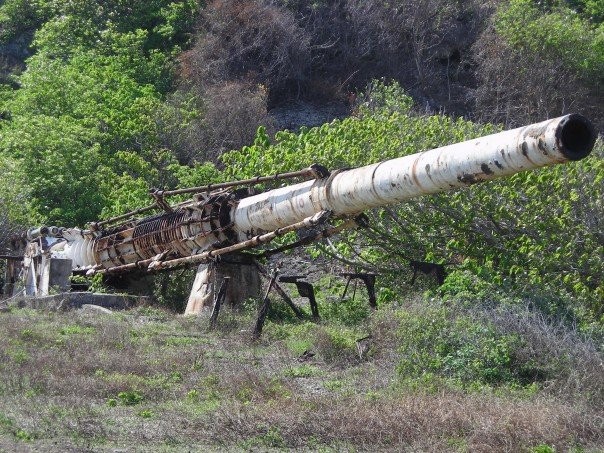

Space Research Corporation
The representatives of the government that dismantled the project wanted to see its guns cut up and its facilities destroyed, but Bull had a trump card up his sleeve. A clause in his contract required McGill to return the test sites to their original condition at the end of the lease, and his Highwater station had grown into a major scientific facility. Returning it to its original condition of a scrubby piece of land down a dirt road would have cost the university millions of dollars.
Bull proposed a solution to the impasse he’d created–the university could transfer the Highwater and Barbados launch sites, along with the guns and all the facilities, over to his ownership. With no other options, the university agreed, and with his new resources Bull founded the Space Research Corporation.
The company needed money, so immediately inked deals with the Canadian and U.S. military research arms to develop artillery systems, putting his work on space guns on hold. He worked as an international artillery consultant throughout the 1970s, supplying arms to the United States, Israel, and South Africa. However, in the latter half of the decade, as international criticism of the apartheid government of South Africa grew, he was arrested for illegal arms dealing. Bull pleaded guilty, expecting a fine, but instead was sentenced to several months in prison.
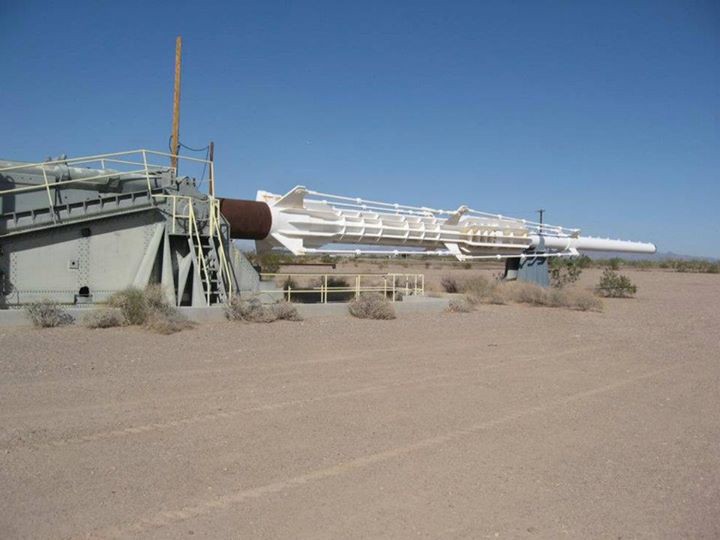
Upon release, he moved to Brussels and secured work with the People’s Republic of China and Iraq. After designing a pair of artillery pieces for the Iraqis, he decided the time was right to fulfill his former ambitions. In 1988, he managed to persuade Saddam Hussein that Iraq would never be a real military power without the capability for space launches, and offered to share his expertise from Project HARP to build a cannon capable of such launches.
Hussein was interested enough to greenlight the project, which called for a gun that was 512 feet [156 meters] long, weighed 4.6 million pounds [2,100 tonnes], and had a 3.3-foot [one-meter] diameter. It was designed to be capable of placing a 4,410-pound [2,000-kilogram] projectile into orbit.
But the Iraqis, seeing how badly Bull wanted to realize his dreams of space guns, added another condition to the deal–Bull would need to help with the development of the country’s long-range scud missiles. He agreed, and the plan was named Project Babylon.

Project Babylon
The first gun built was a prototype for test purposes. “Baby Babylon,” as it was named, was mounted horizontally and had a barrel length of 151 feet [46 meters]. It was expected to achieve a range of 466 miles [750 kilometers]. While its barrel was similar in size to the V-3 cannon that threatened London during the Second World War, it was not considered a security risk by Israel since it was immobile.

The second supergun, “Big Babylon,” was more imposing, however–it was the 512-foot [156-meter] gun that Bull had pitched to start the project. This attracted rather more consternation from Iraq’s military rivals–Iran and Israel. Despite the fact that its ability to fire conventional projectiles would have been limited and slow, it was seen as a threat.
While construction of Big Babylon was taking place, Bull worked on the Scud project, as promised. During the course of his work, his apartment suffered several break-ins where nothing was stolen. A few months later, on March 20, 1990, Bull’s doorbell rang. He answered the door, and was shot five times in the head and back at point-blank range.
The leading theory is that the assassination was conducted by Israeli Mossad agents, who subsequently spread misinformation alleging Bull was shot by Iraqi agents. Other theories point to the Iranians, the CIA, MI6, or the Chilean or South African governments as responsible for his death. After years of working in the international arms industry, and with such a tempestuous nature, Bull had many enemies.
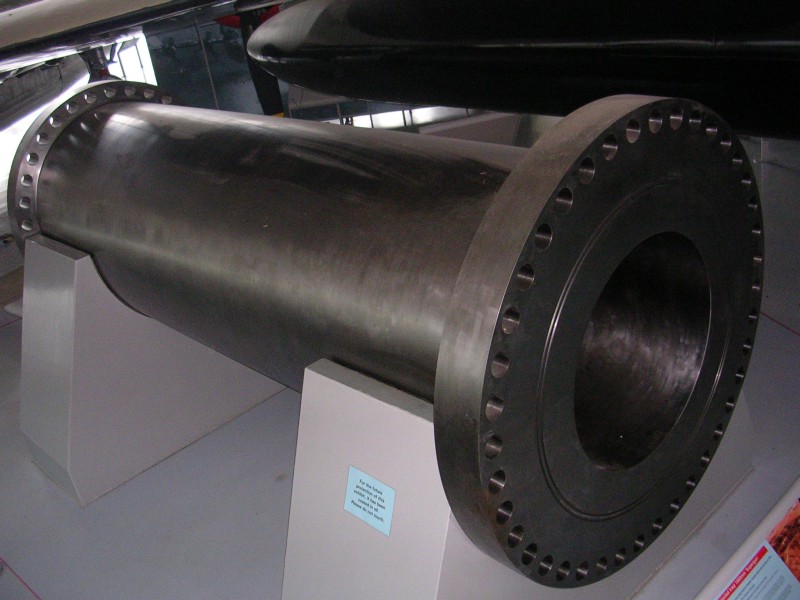
Project Babylon continued for several months following Bull’s death, but was slowed in April 1990 after British customs seized several parts of its barrel. The segments, which were being constructed in Britain, Spain, the Netherlands, and Switzerland, were shipped to Iraq as “petrochemical pressure vessels.”
Fearing for their safety, members of Bull’s remaining staff returned to Canada shortly afterward, and the project ground to a halt. Following the end of the Gulf War in 1991, Hussein admitted the existence of Project Babylon. UN inspectors destroyed the remaining pieces of the gun without it ever having been fired.
In 1995, HBO produced a straight-to-television film titled Doomsday Gun about the life of Gerald Bull and his involvement with Project Babylon. Bull’s story was also the starting point of a 1994 novel by Frederick Forsyth, called The Fist of God.

Project SHARP
As Bull was making his fateful deals with Hussein in the late 1980s, another team of researchers was bringing his dreams to life at the Lawrence Livermore National Laboratory in California.
Project SHARP (Super High Altitude Research Project) was under the direction of a scientist named John Hunter. In 1985, Hunter had been looking at the plans for electromagnetic railguns to shoot down ballistic missiles when he realized that a light gas gun would be much more efficient to launch projectiles to a high percentage of escape velocity.
Light gas guns work just like airguns–a gas is compressed by a piston through a small diameter barrel containing a projectile, forcing it out at very high speeds. Hunter put together a team and set about designing an L-shaped device capable of sending projectiles into the atmosphere at extremely high speeds.
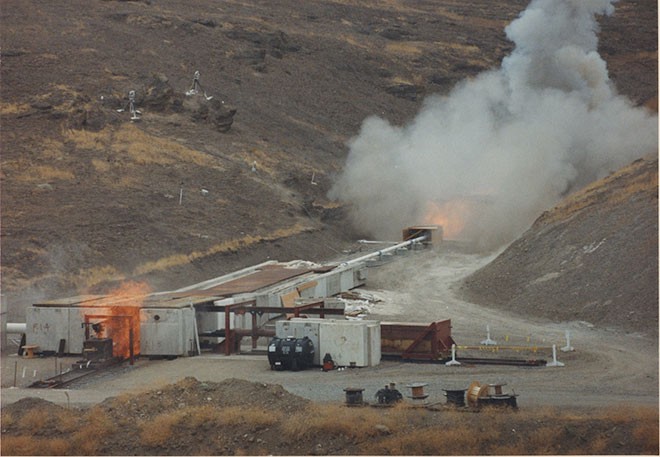
The gun became operational after Bull’s death in December 1992, the largest of its kind in the world at the time. It was over 426 feet [130 meters] long and theoretically capable of firing an 11-pound [5-kilogram] projectile into a set of sandbags at around 8,700 miles per hour [14,000 kilometers per hour]–about a third of the required velocity to get an object into space.
During testing, the gun achieved velocities of just over 6,710 miles per hour [10,800 kilometers per hour], which was promising enough to plan an even larger gun–called the Jules Verne Launcher after its spiritual predecessor. Such a gun would have had a monstrous 2.2-mile [3.5-kilometer] long barrel, but the chief problem was its cost–an equally monstrous billion dollars. Funding was not forthcoming, so Hunter left the project. DARPA eventually acquired the gun.

Quicklaunch
Hunter moved between projects, building water stations on the California-Mexico border, designing armored vehicles, and at one point even developing the Zyclone Zing Ring Blaster and Moonshot kids toys. But like Bull he’d developed a fascination with launching projectiles from guns into space. In 2009, he founded a company called Quicklaunch.
Quicklaunch set out to build a space gun submerged below the ocean. Hunter’s design called for a 3,609-foot [1.1-kilometer] barrel that could be adjusted based on customer launch requirements, fired using hydrogen as the working gas, and methane as the explosive heat source.
According to the company’s claims, it would have taken just 10 minutes to heat and pre-pressurize the hydrogen gas before launch, and most would be recovered at the end of the launch tube to be reused for subsequent launches. The design yielded an initial speed of 3.7 miles per second [six kilometers per second], though this would decrease rapidly once the projectile hit the atmosphere and still fell about halfway short of escape velocity.
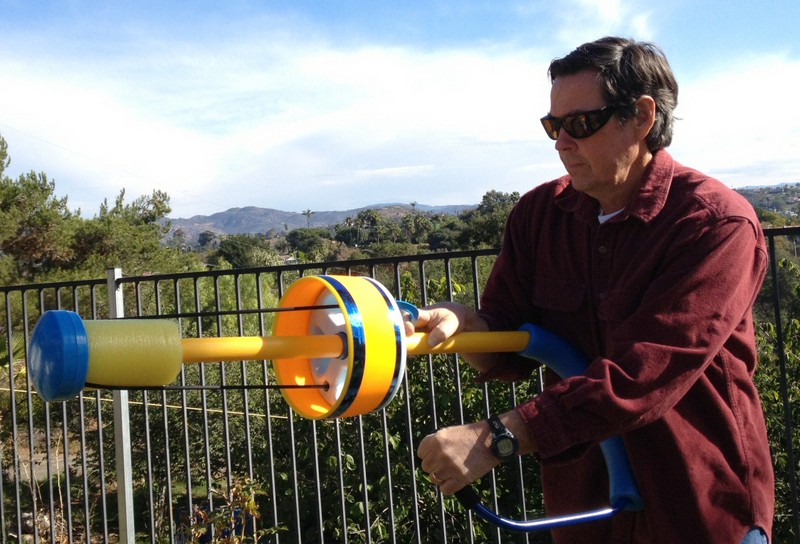
Instead, the launcher was designed to replace the first stage of a rocket–giving it some oomph before it fires its own engines to take them to orbit. The remarkable thing about the project is the cost per kilogram to get something to low Earth orbit–about $1,100, compared to $4,100 on SpaceX’s Falcon 9, $10,500 on Europe’s Ariane 5, or $13,200 on NASA’s Atlas V.
That cost, combined with the high possible frequency of launch (up to five times a day), makes such a system ideal for sending cheap, resilient cargo into space–refueling a space station or orbital space depot, for example. The firing process produces 5,000 Gs–better than Tsiolkovsky’s estimations, but still far from survivable. “A person shot out of it would probably get compressed to half their size,” Hunter told Popular Science in 2010. “It’d be over real quick.”
Unfortunately, as of 2012, the company has faded away–its website is now a domain parking page (see what it looked like previously on Archive.org) and its Facebook page offers a last post from March 2013 with a link to a podcast featuring Hunter. Meanwhile, Hunter has been working on toys–the Moonshot and the HurriK9.

Space guns today
So where does that leave us today? Quicklaunch was the only company working on a modern space gun, though there are several alternatives using magnetic levitation technology, such as the Startram project.
To date, a space gun has never successfully launched an object into orbit–though Project HARP managed to put one of its Martlet-2s into suborbital spaceflight with a maximum altitude of 111.8 miles [180 kilometers]–far above the Kármán line that separates our atmosphere from space.
Rockets remain inefficient, but after many decades of use they’re a relatively safe and well-tested technology for getting objects into orbit. Other forms of non-rocket spacelaunch may be developed as a way of saving costs for simple resupply missions out of the atmosphere, but only for the most basic, robust payloads.
Will we ever shoot people into space from a cannon? Sorry, Jules Verne, thanks to the G-forces involved, the answer is almost certainly not.
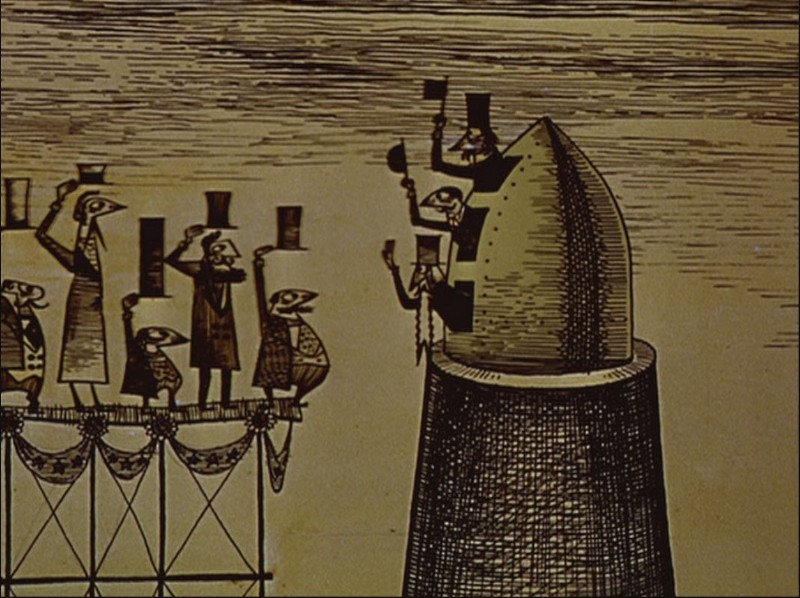


How We Get To Next was a magazine that explored the future of science, technology, and culture from 2014 to 2019. This article is part of our Above & Beyond section, which looks at our understanding of the universe beyond Earth. Click the logo to read more.
